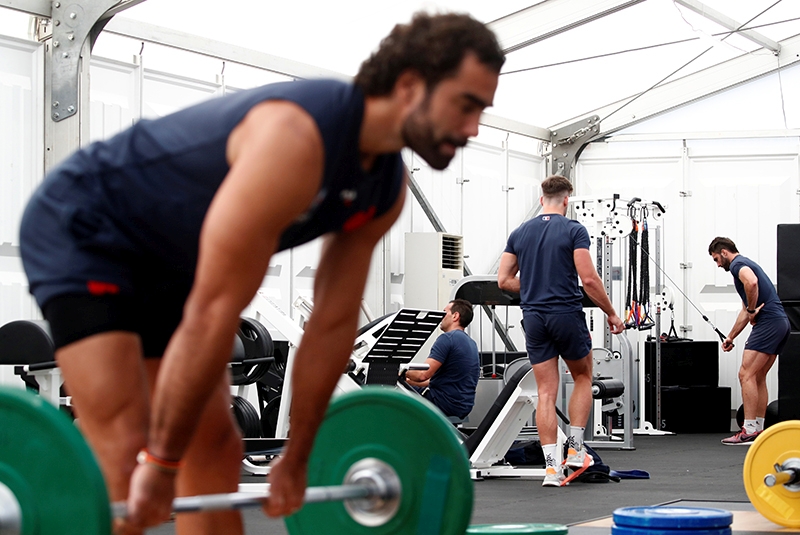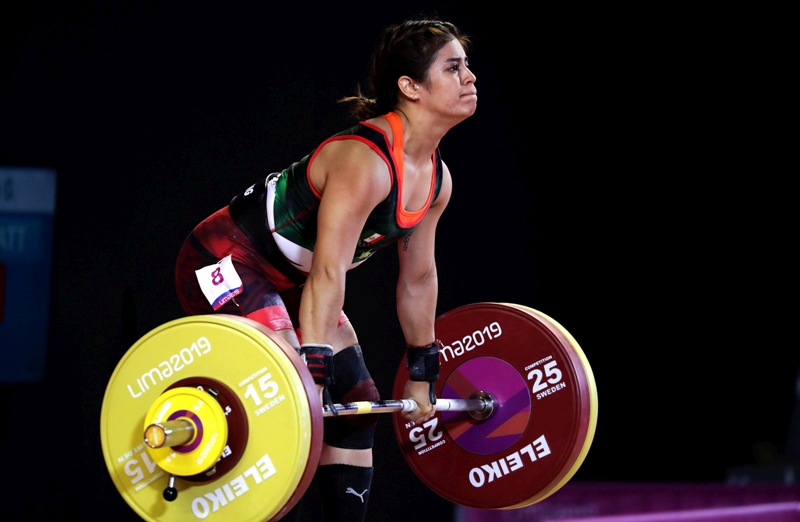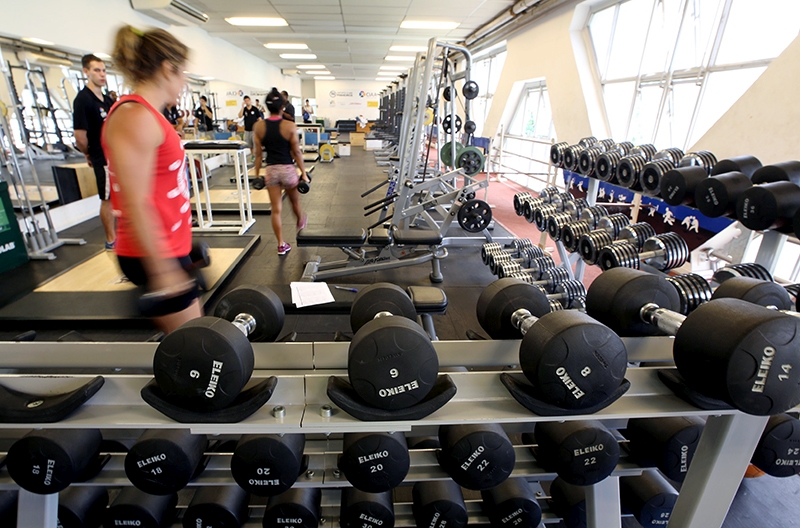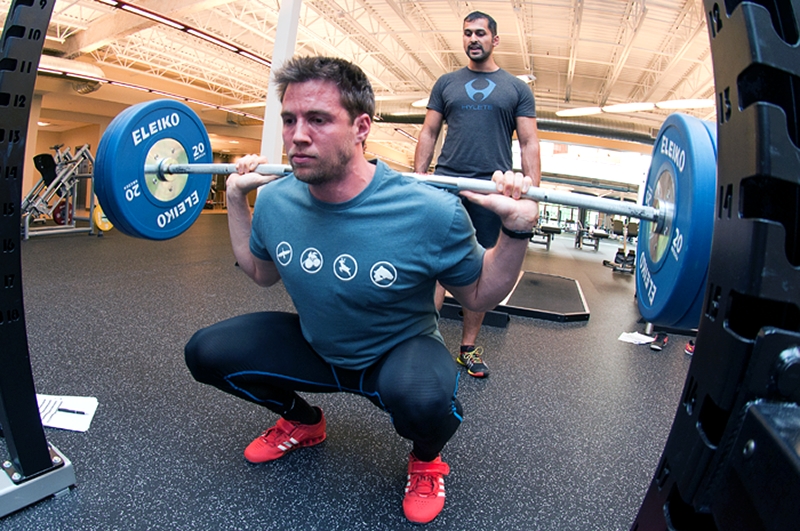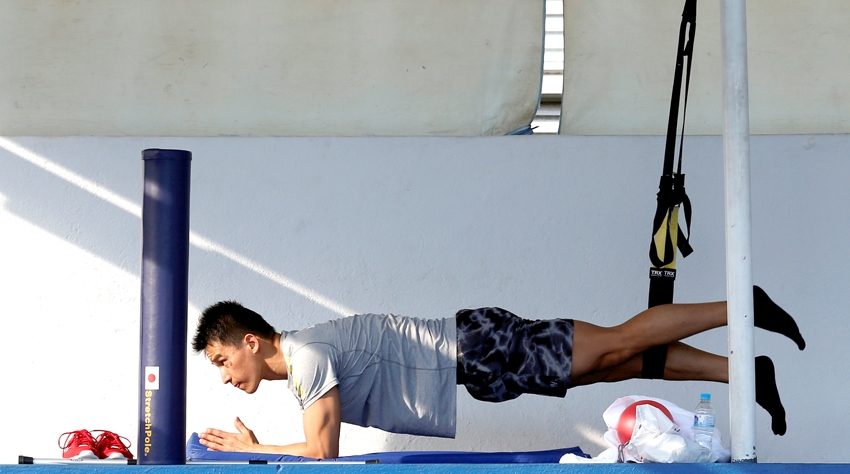You are viewing 1 of your 1 free articles. For unlimited access take a risk-free trial
Hail King Arthur, the godfather of high-intensity strength training!
Arthur Jones' 1970s high-intensity training philosophy has since been validated by science. What is it and how can it help endurance athletes looking for strength gains?
“My God - These look like they belong in a torture chamber!” That was the inevitable reaction of anybody clapping eyes on Nautilus resistance training machines for the first time. Becoming popular in the late 1970s, these brilliant machines eventually fell victim to the trans-Atlantic steel trade war, which raged throughout the 80’s. Why brilliant? Well, Nautilus had charted new waters by successfully managing to marry together two previously unconnected disciplines; exercise physiology and strength training. The company’s idiosyncratic and colourful creator, Arthur Jones, was a pioneer in this field, and many of his revolutionary ideas still hold currency today with those in the know about all things strength related.King Arthur
Unlike many exercise physiologists at the time, Arthur had understood the importance of INTENSITY in muscle conditioning and was a firm advocate of the ‘one intense set is worth half a dozen mediocre sets’ school of thought. This philosophy was encapsulated in Nautilus’s fearsome looking ‘double exercise’ machines such as the Double Chest and Double Shoulder.Sporting more precision engineering than Formula One racing car and weighing at least as much as an ocean-going liner, these machines correctly used could deliver the ultimate double whammy to unsuspecting muscles. Each machine provided two movements; an isolating movement followed by a compound movement which performed sequentially, pushed muscles into a deep state of fatigue – ideal for strength gains.
Pre-exhaustion
Sadly, these machines are now few and far between, but the good news is that you can still apply Arthur’s philosophy, whatever equipment you train with. Welcome to the world of ‘pre-exhaustion’! The pre-exhaustion technique works in two stages. In the first stage you select a muscle group you want to hit and perform an isolation movement on it. Then in stage two, without ANY rest time after stage one, you immediately perform a set which works the same muscle group but this time using a compound movement.The theory behind this technique is simple. In the isolation exercise, you work the target muscle group as hard as you can in order to induce a state a muscle fatigue. Then just when the muscle fibres think they can’t handle any more, the assisting muscles in the compound movement force the target muscles to continue working, which pushes them into an even deeper state of fatigue. The table at the end shows some combinations of exercises that produce a pre-exhaustion/overload effect.
Why does pre-exhaustion work?
Empirically, Arthur Jones’ knew that low-volume, high-intensity training was the key to efficient strength gains. But unfortunately, he died just a year before his philosophy was validated by scientists who discovered a key ‘muscle growth’ signalling molecule called mTORC1 (you can find out more by reading this article). It turns out that the more mTORC1 you can encourage your body to make, the better and faster your strength gains(1,2). And it just so happens that the very best way to stimulate mTORC1 is to train using high intensity muscle overload, but at the same time ensuring that the volume of training is minimised – exactly as Arthur had advocated, and something we reported on in Sports Performance Bulletin way back in 2008. It’s also the perfect resistance-training method for endurance athletes, who need good levels of base strength to fight injury, and for the occasional sprint/power effort. This is because, even though it’s high-intensity, a low-volume resistance training-session won’t leave you sapped of energy for your day-to-day endurance training. This means that you get to see tremendous results for a very small time investment. But don’t thank me – thank Arthur!References
- Eur J Appl Physiol. 2008 102: 145-52
- Am J Physiol. 1999 276: C120-7
PRE-EXHAUSTION COMBINATIONS
For each body part, perform one isolation exercise and follow it immediately with one compound movement
33 1 Table 1 An adapted version of the Injury Psychological Readiness to Return to Sport Scale
| Questions | No confidence in my return to sport | Moderate confidence in my return to sport | Complete confidence in my return to sport |
|---|---|---|---|
| 1. My overall confidence to play my sport is: | 0 | 50 | 100 |
| 2. My confidence to play my sport without any pain is: | 0 | 50 | 100 |
| 3. My confidence to be able to give 100% effort is: | 0 | 50 | 100 |
| 4. My confidence to not think about the injury when playing is: | 0 | 50 | 100 |
| 5. My confidence in the injured part of my body to be able to handle to demands of playing again is: | 0 | 50 | 100 |
| 6. My confidence in my skill level is: | 0 | 50 | 100 |
| #colspan# | TOTAL SCORE |
NB: B/B = barbell; D/B = dumbbell
Newsletter Sign Up
Testimonials
Dr. Alexandra Fandetti-Robin, Back & Body Chiropractic
Elspeth Cowell MSCh DpodM SRCh HCPC reg
William Hunter, Nuffield Health
Further reading
Newsletter Sign Up
Coaches Testimonials
Dr. Alexandra Fandetti-Robin, Back & Body Chiropractic
Elspeth Cowell MSCh DpodM SRCh HCPC reg
William Hunter, Nuffield Health
Keep up with latest sports science research and apply it to maximize performance
Today you have the chance to join a group of athletes, and sports coaches/trainers who all have something special in common...
They use the latest research to improve performance for themselves and their clients - both athletes and sports teams - with help from global specialists in the fields of sports science, sports medicine and sports psychology.
They do this by reading Sports Performance Bulletin, an easy-to-digest but serious-minded journal dedicated to high performance sports. SPB offers a wealth of information and insight into the latest research, in an easily-accessible and understood format, along with a wealth of practical recommendations.
*includes 3 coaching manuals
Get Inspired
All the latest techniques and approaches
Sports Performance Bulletin helps dedicated endurance athletes improve their performance. Sense-checking the latest sports science research, and sourcing evidence and case studies to support findings, Sports Performance Bulletin turns proven insights into easily digestible practical advice. Supporting athletes, coaches and professionals who wish to ensure their guidance and programmes are kept right up to date and based on credible science.

